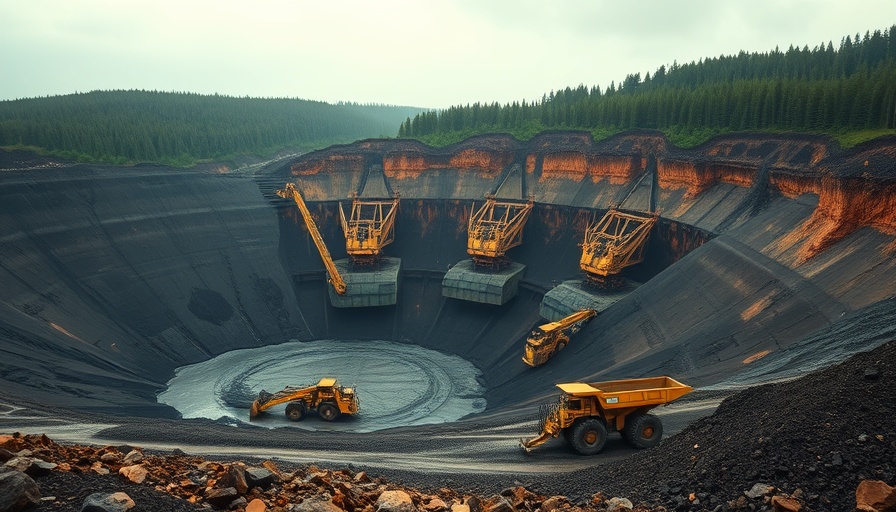
Timely Upgrades: The Importance of Going Green Now
If you’re a California homeowner contemplating the addition of energy-efficient updates to your home, understanding the urgency surrounding clean energy tax credits is crucial. With California’s climate changing and energy costs rising, transforming your home into a more energy-efficient haven not only supports the environment but significantly reduces your bills. The Inflation Reduction Act's clean energy tax credits offer substantial savings, and would-be homeowners must act swiftly to take advantage before these incentives evaporate.
What Are Clean Energy Tax Credits?
Officially known as the Energy Efficient Home Improvement Credit (25C) and the Residential Clean Energy Credit (25D), these incentives provide financial relief to homeowners investing in energy-efficient technologies. Whether it’s upgrading to heat pumps, installing solar panels, or enhancing insulation, eligible improvements can yield up to 30% back in tax credits, making green upgrades more affordable than ever.
Why Are These Credits Phasing Out?
Despite their popularity, recent legislation known as the “One Big Beautiful Bill” passed in 2025 is set to phase out these credits. Intended as a countermeasure to the clean energy growth spurred by the IRA, this move will hinder many families’ opportunities to enhance their homes. As Alex Amend from Rewiring America points out, this legislative shift is a significant setback for American families seeking sustainable living options.
Last Chance to Save: Maximizing Your Eligible Work
To fully benefit from the clean energy tax credits, homeowners are urged to act quickly. Given the hard deadline of December 31, 2025, for project completion, scheduling your upgrades in advance is highly advisable. Delays in installations can thwart your ability to receive these critical credits, so securing quotes and initiating projects now is essential for those looking to save.
Leveraging State and Local Incentives
These federal credits can be complemented with state and local incentives in California. Programs from local utilities may offer additional rebates for solar installations, energy efficiency improvements, and more. Maximizing these combined incentives can lead to remarkable savings, making it a savvy financial decision for homeowners looking to invest in sustainable solutions.
Insights on Future Trends in Green Home Improvements
As environmental concerns continue to escalate, an increasing number of homeowners are considering renewable technologies not just for savings but for their long-term benefits. Market trends suggest that even after the federal credits phase out, homeowners will continue to prioritize energy-efficient solutions as a measure against rising utility costs and to mitigate their environmental impact.
Common Misconceptions About Clean Energy Upgrades
Many individuals mistakenly believe that energy-efficient upgrades are prohibitively expensive. In reality, the initial investment can often be offset by the available tax credits and resultant savings on energy bills. Additionally, some fear that the installation process is complicated or disruptive; however, many companies strive to offer seamless services to minimize inconvenience.
Practical Tips to Act Now
1. **Research**: Understand which home improvements are eligible for credits by visiting the IRS website or consulting a tax professional. 2. **Get Multiple Estimates**: Before committing to contractors, acquire several quotes to ensure competitive pricing and suitability. 3. **Understand Timelines**: Confirm that your chosen contractors can complete projects by the end of 2025 to secure the eligible credits. 4. **Stay Informed**: Continuously educate yourself on local incentives that can complement federal credits, boosting your overall savings.
Final Thoughts: Seize the Opportunity Today!
As the climate crisis intensifies and energy costs continue to soar, homeowners face an unprecedented opportunity to create a greener, more cost-efficient home through the utilization of clean energy tax credits. Though these incentives are set to diminish, the benefits of energy efficiency remain ever-present. By taking swift action to enhance your home's efficiency, you can ensure a brighter, sustainable future while preserving your financial health.
Don’t wait until it’s too late! Take advantage of these time-sensitive clean energy tax credits to save money and invest in your home’s eco-friendly future.
 Add Row
Add Row  Add
Add 




Write A Comment